Welcome to TechCrunch’s 2020 Holiday Gift Guide! Need help with gift ideas? We’re here to help! We’ll be rolling out gift guides from now through the end of December. You can find our other guides right here. This is Part 1 of the Best Books gift guide. Part 2 with even more selections will be posted shortly.
2020 was a tough year for all of us, but a strong one for books (how often do you get to say that?). Sales are up, driven by lockdowns, boredom, and the need for escape. Yet, 2020 also felt like a watershed year for media in general, a time when we started to deeply question the value of real-time communications driven by fear.
Books are no guaranteed antidote to the daily grind of the information economy, but they do provide room for readers and authors to breathe, to take stock of where we are and where we are going. Not in the moment, but of the moment. Whether that means escaping into the lives of fictional characters on another planet, or understanding the lives of others on our very own, books provide the material that can help us rethink all that’s going on and what happens next.
So I’m delighted to share nine book recommendations from my fellow TechCrunch writers as well as a few VCs on what to read in 2020. Some books are a few weeks old, others a few years, but they all made an impact on the lives of their reviewers this year as we confronted one of the most challenging times in recent memory.
This article contains links to affiliate partners where available. When you buy through these links, TechCrunch may earn an affiliate commission.
Dark Mirror: Edward Snowden and the Surveillance State by Barton Gellman
Penguin Random House, 2020, 448 pages
Recommended by Zack Whittaker, Cybersecurity Editor at TechCrunch
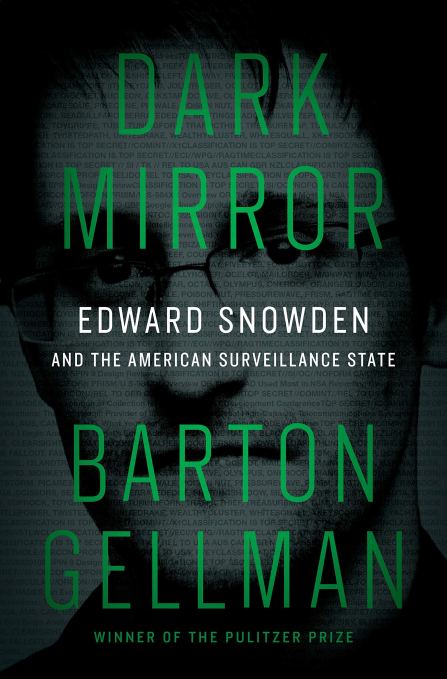
Dark Mirror tells the story of how its author, Pulitzer Prize-winning journalist Barton Gellman, became embroiled in reporting one of the biggest leaks of highly classified documents in a generation, thanks to former NSA contractor turned whistleblower Edward Snowden.
Gellman was one of only a handful of people given a copy of the cache of “top secret” documents swiped by Snowden in 2013. The documents revealed the enormous scale of the U.S. government’s surveillance capabilities — and those of its allies. The book is written largely in first-person, and it shines a brand new light on the Snowden disclosures and published stories that followed, the mistakes that were made, as well as new revelations that were never previously told.
You learn more about Snowden, his character and temperament, how he collected thousands of classified documents from right under the NSA’s nose, how he came to “meet” Gellman for the first time, and what motives led the whistleblower to go public.
You also follow how Gellman sourced, vetted, and fact-checked some of the most significant findings from the documents — with help from researchers Ashkan Soltani and Julie Tate — from revealing the PRISM slides, to the jaw-dropping moment that Gellman recounted telling a Google engineer how the NSA was secretly siphoning off data from its private datacenter links. Gellman spares no detail of his years-long journey in covering the documents, and isn’t one to shy away from revealing his own struggles — not least trying to protect the cache from spies both at home and abroad, and fearing that he too could become a target.
Gellman brings a fresh perspective and hindsight on the narrative you might have followed in the aftermath of the scandal, and fills in the blanks during a period of time that had the world in turmoil. And yet seven years after the first of many stories broke, Dark Mirror continues to spill details never known before in every chapter. His storytelling is exquisite, even if you’ll never want to use the internet again after reading it.
Price: $20 from Amazon
The Color of Money: Black Banks and the Racial Wealth Gap by Mehrsa Baradaran
Belknap Press (Harvard University Press), 2017, 384 pages
Recommended by Liz Sisson, Chief Operating Officer of Urban Us
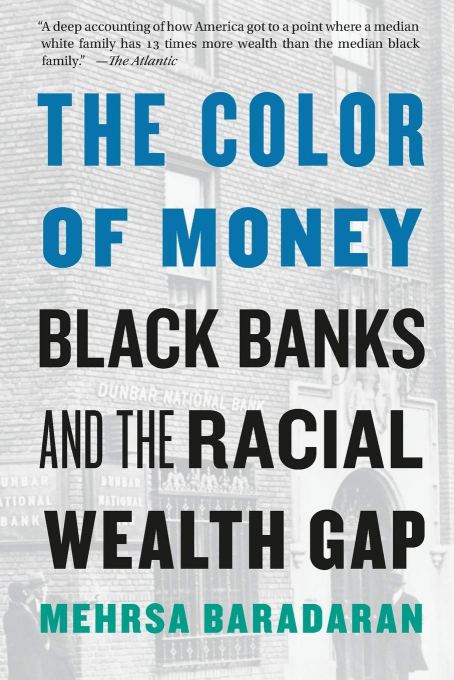
Anyone who manages money, invests in others’ livelihoods or lives in America should read The Color of Money: Black Banks and the Racial Wealth Gap by Mehrsa Baradaran, an associate dean and professor at the University of California-Irvine and a fellow at the Roosevelt Institute.
Baradaran’s 2017 book explores the past efforts to create economic inclusion in the United States, how they have not succeeded and how any real attempts to improve the wealth gap would need to improve access to capital, among other solutions.
The book digs into financial institutions and policies that are responsible for creating and maintaining racial inequalities in the United States. Baradaran covers the racial wealth gap and its relation to banking as well as the history, political theories, policies and people who maintained the long-standing racist institutions with access to capital and therefore wealth. The book also addresses the idea that wealth is not the same as equality.
A median white family in America has 13 times more wealth than that of a median Black family. The Color of Money explains why that wealth gap continues, and why it tripled between 1984 and 2009, through history and an examination of government policies such as redlining and GI Bills as well as discriminatory behaviors.
Baradaran teaches the reader about the long history of financial institutions such as community banking, Black banks, mortgage lending and government programs (e.g. CDFI, CRA, GSE, OMBE and FDIC) that have played a role in these systems. She also investigates the limitations of capitalism due to segregation and exploitation during the Reconstruction era, the Great Migration, the New Deal era, Jim Crow, and throughout the neoliberal, trickle-down, small government, and war on drugs policies of the 1970s, 80s, 90s and beyond.
The book introduces the philosophies of many leaders, from Frederick Douglass to Martin Luther King Jr., and Presidents Nixon and Reagan who argued that financial prosperity through Black capitalism (banking, ownership, boot straps and entrepreneurship) was the answer to equality. The author argues these ideas are not magic bullets to fix centuries of poverty and abysmal economic opportunity due to discriminatory government, banking policies and generally resource-poor communities. The book breaks down the stereotypes of self-help dogma that tout “save more, don’t spend so much or pull yourself up” and rejects the idea that those who are not wealthy just need more financial literacy or mentorship. “Self-help microfinance cannot overcome macro inequality and systemic racism.”
Deploying capital and creating economic opportunity in VC and in startups means it’s important to understand the racial wealth gap and the history of banking, credit and capital in the United States. As a society, we should constantly be learning from our past mistakes to ensure we are making better and equitable decisions for the future. The Color of Money is a necessary work that pushes us to correct those past wrongs.
Price: $15 from Amazon
The Death of the Artist: How Creators Are Struggling to Survive in the Age of Billionaires and Big Tech by William Deresiewicz
Henry Holt and Co. (Macmillan), 2020, 368 pages
Recommended by Danny Crichton, TechCrunch Managing Editor
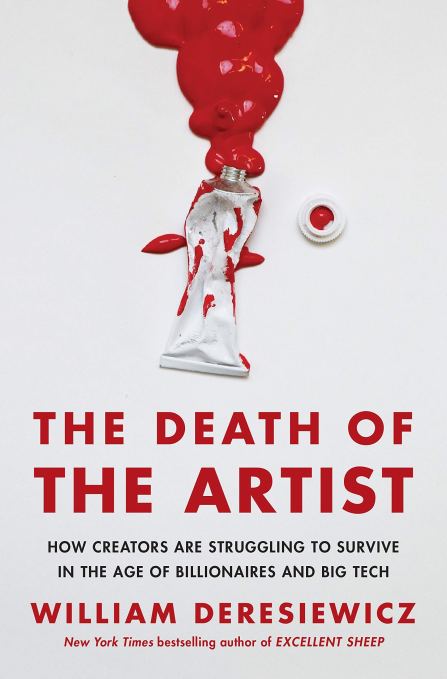
The internet has completely upended the production of art (often labeled as “content” in the capitalist jargon du jour). When it first came to wide attention, the internet seemed like an invention of infinite promise for creatives — a medium of open expression and a network of new human connections that offered faster and broader access to the most brilliant minds of the world. Old barriers crumbled, and cyberspace would be the new basis for an ambitious era of art.
Along the way, the internet also decimated the economic foundations of the modern art world, and despite the media’s obsession with platforms like Kickstarter, Patreon, and Substack, has done almost nothing to underwrite the old middle-class careers that were once available to artists.
William Deresiewicz, the famed essayist of The Disadvantages of an Elite Education and a book on how colleges produce Excellent Sheep, turns his attention to the creator market and the economics of art. He’s both an observer and a participant, having left his decade-long teaching stint at Yale to go full freelancer. For the book, he interviewed about 150 creators across a range of fields, from painting and sculpture to writers and illustrators, and what he finds is, perhaps unsurprisingly, depressing.
In short, the economics of art today are terrifying. Platforms like Spotify pay a pittance for art, and the so-called “mid-list” works of artists are increasingly valueless. The internet may have millions of creators bopping around, but few of those people are getting paid, and an extremely small number are getting paid well. Like in so many other knowledge fields, there is an extreme superstar effect on the internet where a handful of artists can have all while almost all other artists have none.
While the descriptions of the salaries and lack of benefits offers some of the emotional heft of the book, Deresiewicz’ goes on to explore the history of the funding of the arts, from Renaissance patrons to the modern world of grant and foundation money, attempting to place our current predicament into context. He manages to critique everyone, from artists who refuse to adapt to the capitalistic structures of today to the art schools that profit off the indebtedness of their students. I was expecting a polemic, and got a reasonable slice of analysis instead.
It’s an eye-opening book, but necessarily incomplete. For the reality is, there are too many humans who want to produce art, and too few consumers who want to pay to observe and enjoy it. That supply and demand mismatch isn’t going away anytime soon. While the author has some interesting ideas about copyright and intellectual property commons and what not, the reality is that the plight of the artist is most definitely not a problem that has been solved by Silicon Valley technologists.
Most of the book isn’t revolutionary, but in many ways, few economics are for art. The Death of the Artist reminds us that the consumer choices we make do influence the kind of art we get — and the future prognosis isn’t good.
Price: $20 from Amazon
A Woman of No Importance: The Untold Story of the American Spy Who Helped Win World War II by Sonia Purnell
Penguin Random House, 2019, 368 pages
Recommended by Ron Miller, TechCrunch enterprise reporter

When you look back at World War II, you no doubt have heard about the male leaders and generals on all sides of the conflict. These are the people history typically remembers, but you don’t usually hear about the unsung heroes, who operated in the shadows doing the hard work that wins wars.
One such person is a woman named Virginia Hall.
Author Sonia Purnell tells her remarkable story in the ironically titled A Woman of No Importance. As it turns out, Hall was incredibly important, and she single-handedly helped organize the resistance in Nazi-occupied France, moving stealthily around the country, constantly on the run from the Gestapo and French authorities, while somehow maintaining contact and passing valuable information to England.
She did all this not only as a woman in a world that didn’t take women seriously, remarkably, she also accomplished this with only one leg. Hall lost one of her legs in a hunting accident and used a wooden prosthetic, making her even more conspicuous for the authorities who were constantly on her trail.
Hall, who grew up in Baltimore, traveled overseas as a girl and developed a fondness for France. Even after the hunting accident, she drove an ambulance in France when the Germans attacked in 1940, simply wanting to help. Later after returning to London, she somehow talked her way into a new spy network that was being formed by the English government. They lacked personnel who knew France and had contacts, so they took a chance on her. She rewarded them richly with a body of work that would help change the war. Later, she would work for the precursor to the CIA, the Office of Strategic Services, when America joined the war.
Among her accomplishments were building a network of spies, safe houses and supply routes. She quietly helped organize French resistance and once in place, made sure they had money, weapons, food and training. She once engineered a daring escape of her colleagues, who were being held captive by Nazi authorities in a well-guarded prison camp. She climbed over the rugged Pyrenees mountains through deep snow to safety in Spain when she had to escape the country.
In spite of these accomplishments and many more, she of course had to deal with overt sexism along the way, and Purnell tells how she was often required to report to men who were inferior in every sense. Often she just went her own way, bypassing the system and simply getting the job done.
While there were awards and accolades after the war, she mostly ignored them and seemed content to be a person who operated in the background. She later worked for the CIA, where again she had to deal with sexism and a general lack of respect for her accomplishments.
Hall should be a figure who is remembered and revered by history — a role model for all, a woman whose dogged persistence, intelligence and savvy helped win the war. I couldn’t put this book down, constantly astonished by her feats of daring and bravery, and by the fact that such an amazing person could have been lost to history if not for this impeccably researched book.
Price: $16 from Amazon
Shoe Dog: A Memoir by the Creator of Nike by Phil Knight
Scribner (Simon & Schuster), 2016, 400 pages
Recommended by Nicole Quinn, partner at Lightspeed Venture Partners
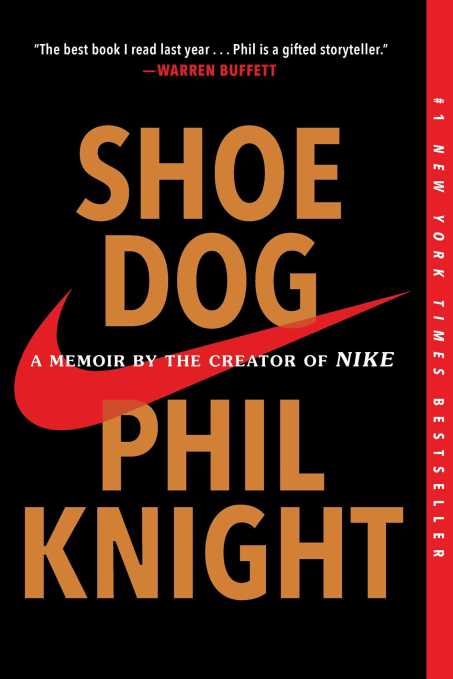
I was a competitive sprinter for many years. It’s how I cleared my head and maintained equilibrium, so the book I recommend to founders is Shoe Dog, Phil Knight’s story of how he started his career selling low-cost running shoes and turned it into a $160 billion empire.
I remember reading Shoe Dog for the first time shortly after it was published, under the arches at the Knight Management Center at Stanford, where I had just finished my degree while also working on my own startup. That building was named after Phil Knight, who received his MBA from Stanford and had donated $105 million to the university.
One of the things I like about this book is that Knight was one of the first to discover the power of influencer marketing — most famously Nike’s connection with Michael Jordan in the 1980s. The deal was a partnership of equals between an up-and-coming company and a rising superstar, and it completely transformed the worlds of both sports shoes and celebrity endorsements.
Knight’s account of that partnership taught me to never take my own partnerships for granted. I consider myself lucky to work with influencers like Gwyneth Paltrow and Lady Gaga on Lightspeed portfolio companies Goop and Haus Laboratories respectively. By treating these as true partnerships of value and respect, we can aspire to achieve what Nike and Jordan did with theirs.
Shoe Dog also drove home for me the incredible importance of word-of-mouth marketing. Knight writes about what happened when his first full-time employee, Jeff Johnson, walked around in a pair of Blue Ribbon Tigers: “People kept stopping him and pointing at his feet and asking where they could buy some neat shoes like those.”
When we analyzed Calm and Cameo to join our portfolio, we looked closely at their potential for generating word of mouth and were impressed with both. As in the early days of Nike, word of mouth is still one of the leading indicators of a brand with staying power.
Knight’s book also teaches us about the power of thinking globally. Back in 1980, Knight was already plotting to use Nike’s foothold in Japan to expand into China. Today, many strong U.S. brands still underperform in other countries. One of the key reasons Lightspeed has opened offices in China, India, Israel, and London is to offer insights and advice for companies that seek a more global footprint.
Finally, Shoe Dog has made me grateful for all the funding options we have today for startups. Back in the early 1970s, when Knight was trying to build Nike into a global brand, IPOs weren’t necessarily a celebration. They were often the only way organizations could raise the capital they needed to reach the next level. “If we didn’t go public, we risked losing everything,” Knight writes. He didn’t want to do an IPO, but it was his only option to scale the company.
That’s a different universe than the one we live in now, with all the different investment rounds and funds available to startups today, which allow companies to take as long as they need before filing for a public offering, assuming they decide to take that path.
These are just some of the reasons why I would recommend Shoe Dog. It perfectly captures the entrepreneurial spirit I see in the people and companies I work with each day and inspires me to help them follow in Knight’s footsteps.
Price: $11 from Amazon
The Information: A History, a Theory, a Flood by James Gleick
Vintage (Penguin Random House), 2011, 544 pages
Recommended by Danny Crichton, TechCrunch Managing Editor

Information — what it is, when’s it true, and what’s it for — has been one of the most persistent themes in tech the past few years. There are now dozens of works on misinformation, algorithmic propaganda, and “fake news” trying to help us wade through the epistemology of the modern world. Yet, this isn’t the first time that humans have gone through an information revolution, nor is it likely to be the last.
James Gleick wrote The Information almost a decade ago, but the book feels more relevant than ever. In it, he provides a full historical overview of what we mean by information, how it gets organized, and how it gets transmitted from person to person. It’s an absolutely fascinating lens to view history by, and represents one of the best examples of the power of synthesis to redefine our perspective on the world.
What’s all here? The invention of the alphabet and the dictionary. The use of drums and flares to signal danger and communicate over distances. The telegraph and the telephone. The development of mathematics and particularly the mathematics of information theory. Quantum and classical computing. All wrapped up into an overarching narrative about the human need for more knowledge and understanding of the universe. You also get to meet a cast of luminaries along the way including some of the most brilliant minds in physics, mathematics and computer science.
Gleick focuses mostly on the theory and the invention of the technologies themselves, with occasional digressions into the social ramifications of these communications technologies. I would have liked more of the latter, as one pattern you notice with each wave of communications technology is that there are distinct short-, medium-, and long-term changes that each induces. Given how much acceleration around information we have had the past decade or two, it’s quite palpable to observe just how much more change is to come that’s already been set in motion.
In short, The Information is a deeply-researched and enticing historical journey, one that encourages us to contextualize the overwhelming changes happening in our world.
Price: $16 from Amazon
Lifespan: Why We Age—and Why We Don’t Have To by David A. Sinclair with Matthew D. LaPlante
Atria Books (Simon & Schuster), 2019, 459 pages
Recommended by Alex Iskold, managing partner of 2048 Ventures
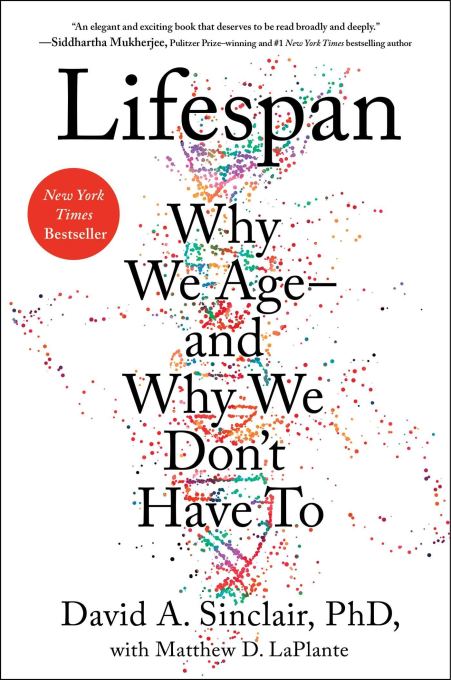
David Sinclair, professor of genetics at Harvard Medical School, dedicated his life to the research of aging. The central idea of Lifespan, his latest book, is that humans aren’t actually programmed by nature to age and die. Instead, Sinclair argues that heart disease, Alzheimer’s, cancer and other major causes of death are all manifestations of one single disease — aging. He then explains how cutting-edge science in coming decades will help substantially slow down, and eventually reverse aging, enabling people to live to 150 years old and beyond.
The book contains a fascinating mix of Sinclair’s research, practical advice on anti-aging, implications for healthcare and medicine, philosophy of anti-aging and mind-bending societal implications of substantially longer lifespan
Price: $15 from Amazon
Jonathan Strange & Mr. Norrell by Susanna Clarke
Bloomsbury, 2005, 864 pages
Recommended by Anthony Ha, TechCrunch writer

I’ve had a copy of Jonathan Strange & Mr. Norrell on my shelf for years, but I never felt motivated enough to start the (literally) thousand-page tome until its author, Susanna Clarke, was profiled a few months ago in The New Yorker.
Boy, do I feel dumb for waiting. The novel is an absolute pleasure from beginning to end, and as soon I’d started it, I found myself trying to steal free time to read another 10 pages (or 50, or 100 …)
The novel takes place in an alternate England where magic is real — or so we’re told. By 1806, when the story opens, faeries have disappeared, and the only magicians are “theoretical,” spending their time researching magical history rather than casting real spells.
Gilbert Norrell, a rather stodgy and reclusive scholar of the magical arts, changes all that. When challenged by The Learned Society of York Magicians, Mr. Norrell reveals his powers by bringing an entire cathedral’s work of statues to life. He then proceeds to London, where he hopes to revive the practice of English magic. Eventually, he trains an equally talented magician named Jonathan Strange — Strange is younger, more dashing, and more impulsive, and the pair’s friendship soon turns into a rivalry.
That’s just the barest outline of the story, which encompasses everything from the Napoleonic wars, the cost of bringing your loved ones back from the dead, and the history of a mysterious figure known as the Raven King. Jonathan Strange & Mr. Norrell fully justifies its length — if anything, it packs an entire trilogy’s worth of plot into a fast-paced single volume.
Beyond the pleasure of finding out what happens next, I luxuriated in the opportunity to spend time with the characters and world that Clarke created. Jonathan Strange and Mr. Norrell seem like real people, while its alternate history (often revealed in playful footnotes) feel like real history.
And, more than any novel I can recall, Jonathan Strange & Mr. Norrell makes magic seem like something indescribably strange — not just a writerly trick or trope, but a hidden layer of reality that only a talented magician (or talented writer) can reveal.
Price: $10 from Amazon
Exhalation: Stories by Ted Chiang
Knopf (Penguin Random House), 2019, 368 pages
Recommended by Danny Crichton, TechCrunch Managing Editor

We ran an experimental book club on the short story collection Exhalation, which explores a variety of themes about connection, humanity, and a nice bit of time warp. Chiang has a preternatural ability to devise interesting plot devices and extend them into beautiful fractals of thinking and reflection. Definitely read the book, and check out our story-by-story discussion from earlier this year on TechCrunch:
Price: $15 from Amazon












